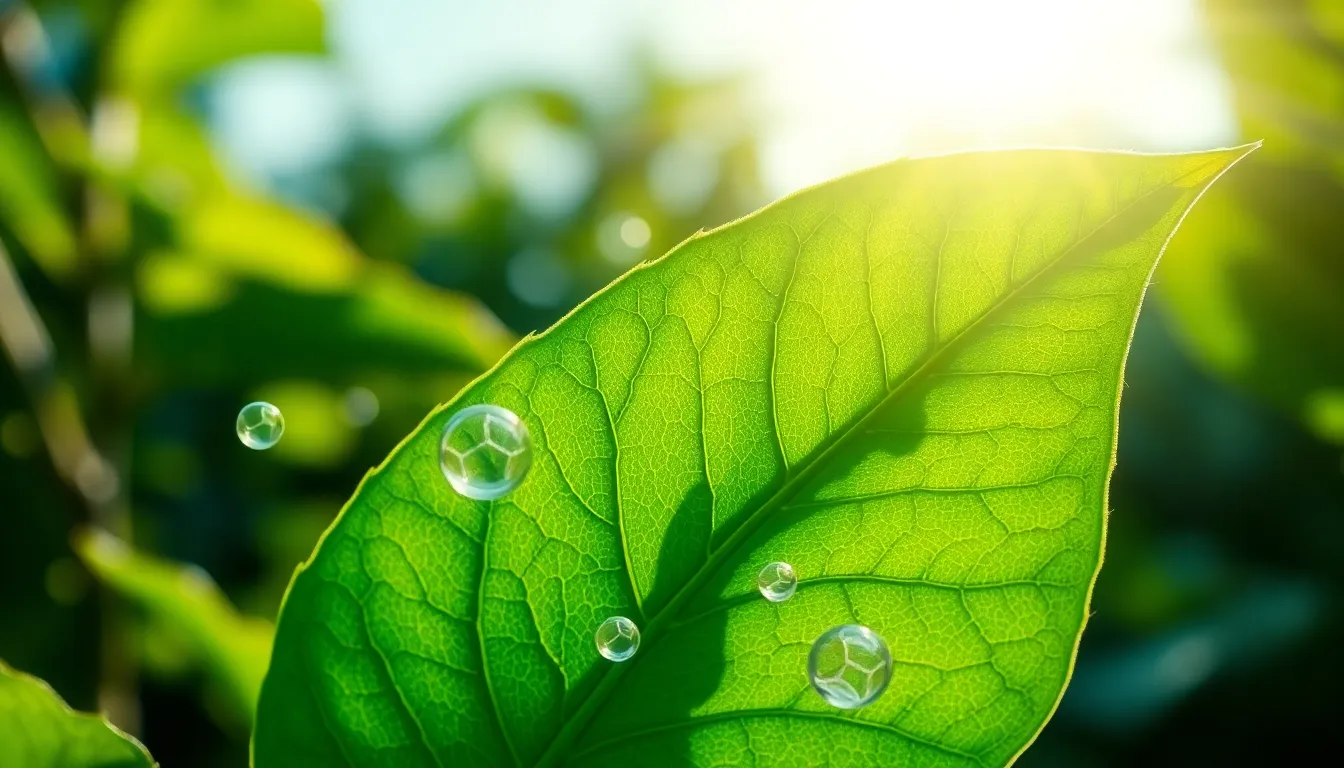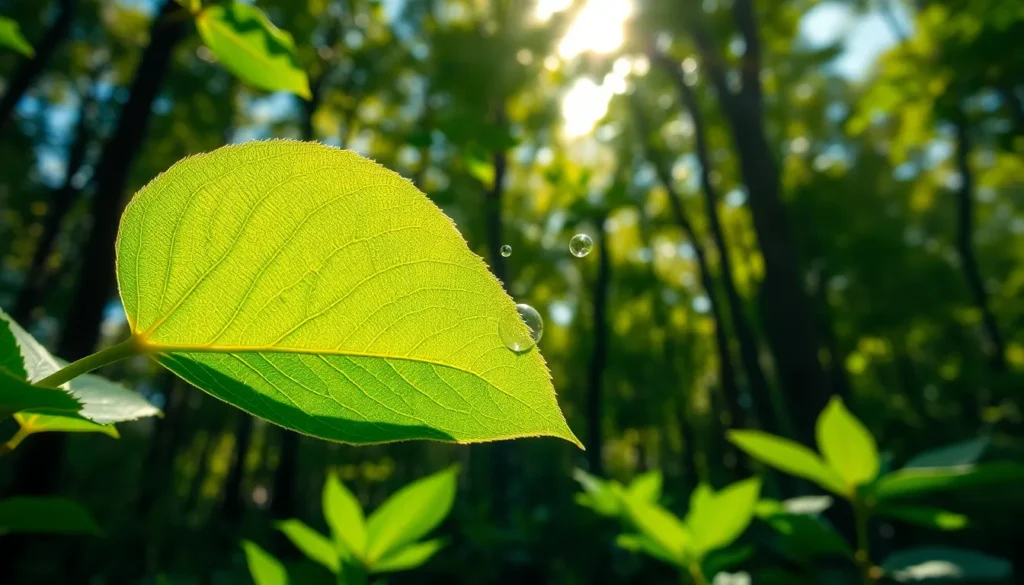Photosynthesis is a fascinating process that fuels life on Earth by converting sunlight into energy. Plants, algae, and some bacteria harness this natural phenomenon to produce glucose and oxygen, essential for their survival and growth. But what about carbon dioxide? Many people wonder if photosynthesis actually produces this gas, which is often associated with respiration and environmental concerns.
Understanding the relationship between photosynthesis and carbon dioxide is crucial for grasping the delicate balance of our ecosystem. While photosynthesis primarily consumes carbon dioxide, the process isn’t as straightforward as it seems. This article delves into the intricacies of photosynthesis, exploring its role in carbon dioxide dynamics and its implications for our planet’s health.
Table of Contents
ToggleUnderstanding Photosynthesis
Photosynthesis is the process through which plants, algae, and some bacteria convert sunlight into energy, primarily producing glucose and oxygen. This intricate process involves several steps and key components that influence its efficiency and output.
The Process of Photosynthesis
Photosynthesis occurs in two main stages: the light-dependent reactions and the light-independent reactions, also known as the Calvin cycle.
- Light-dependent reactions take place in the thylakoid membranes of chloroplasts. During this phase, sunlight splits water molecules into oxygen, protons, and electrons. Oxygen is released as a byproduct, while the energy captured from sunlight converts ADP and NADP+ into ATP and NADPH respectively.
- Light-independent reactions happen in the stroma of chloroplasts. ATP and NADPH generated from the first phase drive the conversion of carbon dioxide into glucose. Carbon dioxide enters the leaf through stomata and combines with ribulose bisphosphate to form 3-phosphoglycerate, which is then converted into glucose through a series of enzymatic reactions.
Key Components Involved
Several key components are essential for effective photosynthesis:
- Chlorophyll: This green pigment absorbs sunlight, facilitating the conversion of light energy into chemical energy.
- Water: Water molecules provide the electrons necessary for the light-dependent reactions and contribute to oxygen release.
- Carbon Dioxide: Carbon dioxide acts as the carbon source for glucose synthesis in the Calvin cycle.
- Sunlight: Sunlight serves as the primary energy source driving the entire photosynthetic process.
- Chloroplasts: These organelles house the photosynthetic machinery, containing chlorophyll and providing the environment for light and dark reactions.
The Role of Carbon Dioxide

Carbon dioxide is crucial for photosynthesis, providing the carbon necessary for glucose synthesis. This relationship impacts both plant growth and carbon dynamics in ecosystems.
Importance in Photosynthesis
Carbon dioxide plays a vital role in the Calvin cycle, where it undergoes a series of transformations. The process initiates when carbon dioxide molecules are fixed into organic compounds, specifically ribulose bisphosphate (RuBP), through the enzyme RuBisCO. This fixation leads to the production of 3-phosphoglycerate (3-PGA), which is subsequently converted into glucose. Without adequate carbon dioxide, the efficiency of photosynthesis decreases, limiting glucose production and affecting plant health.
Sources of Carbon Dioxide
Carbon dioxide enters the atmosphere from various sources, including:
- Respiration: Organisms, including plants at night, release carbon dioxide during cellular respiration.
- Decomposition: The breakdown of organic matter by decomposers emits carbon dioxide.
- Combustion: The burning of fossil fuels and biomass contributes significantly to atmospheric carbon dioxide levels.
- Natural processes: Volcanic eruptions and oceanic exchanges also add carbon dioxide to the environment.
These sources collectively influence the availability of carbon dioxide for photosynthesis, highlighting its significance in maintaining the balance of ecosystems.
Photosynthesis and Carbon Dioxide Production
Photosynthesis is a complex process primarily associated with the consumption of carbon dioxide, but misconceptions exist regarding its role in the overall carbon cycle. Understanding these details clarifies the true relationship between photosynthesis and carbon dioxide.
Common Misconceptions
Misconception 1: Photosynthesis produces carbon dioxide. In actuality, photosynthesis consumes carbon dioxide to produce glucose and oxygen. The oxygen released during photosynthesis comes from water molecules, not carbon dioxide.
Misconception 2: Only plants perform photosynthesis. While plants are the primary organisms, certain algae and some bacteria also carry out photosynthesis, emphasizing the importance of diverse life forms in carbon dioxide utilization.
Misconception 3: More carbon dioxide always leads to better growth. Excessive carbon dioxide can lead to imbalances and negative impacts on plant health. Other factors, including nutrients and water availability, also significantly affect plant growth.
The Science Behind the Process
The process of photosynthesis occurs in two stages: light-dependent reactions and light-independent reactions, known as the Calvin cycle. During light-dependent reactions, chlorophyll captures sunlight in chloroplasts. Water molecules split, releasing oxygen and generating ATP and NADPH, which act as energy carriers.
In the Calvin cycle, which happens in the stroma of chloroplasts, ATP and NADPH facilitate the conversion of atmospheric carbon dioxide into glucose. The enzyme RuBisCO plays a critical role in fixing carbon dioxide into organic compounds. This step underscores the importance of carbon dioxide in creating the organic matter that forms the basis of the food chain.
Understanding the carbon dioxide dynamics in photosynthesis highlights its vital role in maintaining plant health and ecosystem balance, fostering further exploration into sustainable practices for managing atmospheric carbon dioxide levels.
Implications on the Environment
Photosynthesis plays a significant role in shaping environmental dynamics, particularly through its relationships with carbon dioxide levels. Understanding its impacts can aid in addressing broader ecological concerns.
Effects on Climate Change
Photosynthesis directly influences climate change by regulating atmospheric carbon dioxide levels. Plants absorb approximately 120 gigatons of carbon dioxide annually through photosynthesis, reducing greenhouse gas concentrations in the atmosphere. This process helps mitigate global warming. However, rising temperatures and changing precipitation patterns can hinder photosynthesis, leading to decreased carbon sequestration. Reduced carbon absorption from declining plant health exacerbates climate change impacts, creating a feedback loop that threatens ecosystem stability.
The Balance of Carbon Cycles
Photosynthesis is a key player in maintaining the carbon cycle, where carbon dioxide is exchanged between the atmosphere, oceans, and living organisms. During photosynthesis, plants convert carbon dioxide into organic compounds, integrating it into food webs. Approximately 50% of carbon fixed through photosynthesis is eventually released back into the atmosphere via respiration and decomposition, creating a cyclical balance. Human activities, such as deforestation and fossil fuel combustion, disrupt this balance, increasing atmospheric carbon dioxide levels. Maintaining healthy photosynthetic systems is essential for preserving this balance and ensuring a stable environment.
Photosynthesis is a remarkable process that plays a critical role in sustaining life on Earth. While it primarily consumes carbon dioxide to produce glucose and oxygen, the relationship between these elements is intricate. Understanding how carbon dioxide is utilized in photosynthesis highlights its importance in maintaining ecosystem balance.
As plants and other photosynthetic organisms continue to absorb carbon dioxide, they help regulate atmospheric levels and combat climate change. By appreciating the nuances of this process, individuals can better grasp the significance of carbon dioxide and its role in the health of our planet. This knowledge is essential for fostering a sustainable future and addressing the challenges posed by environmental changes.






